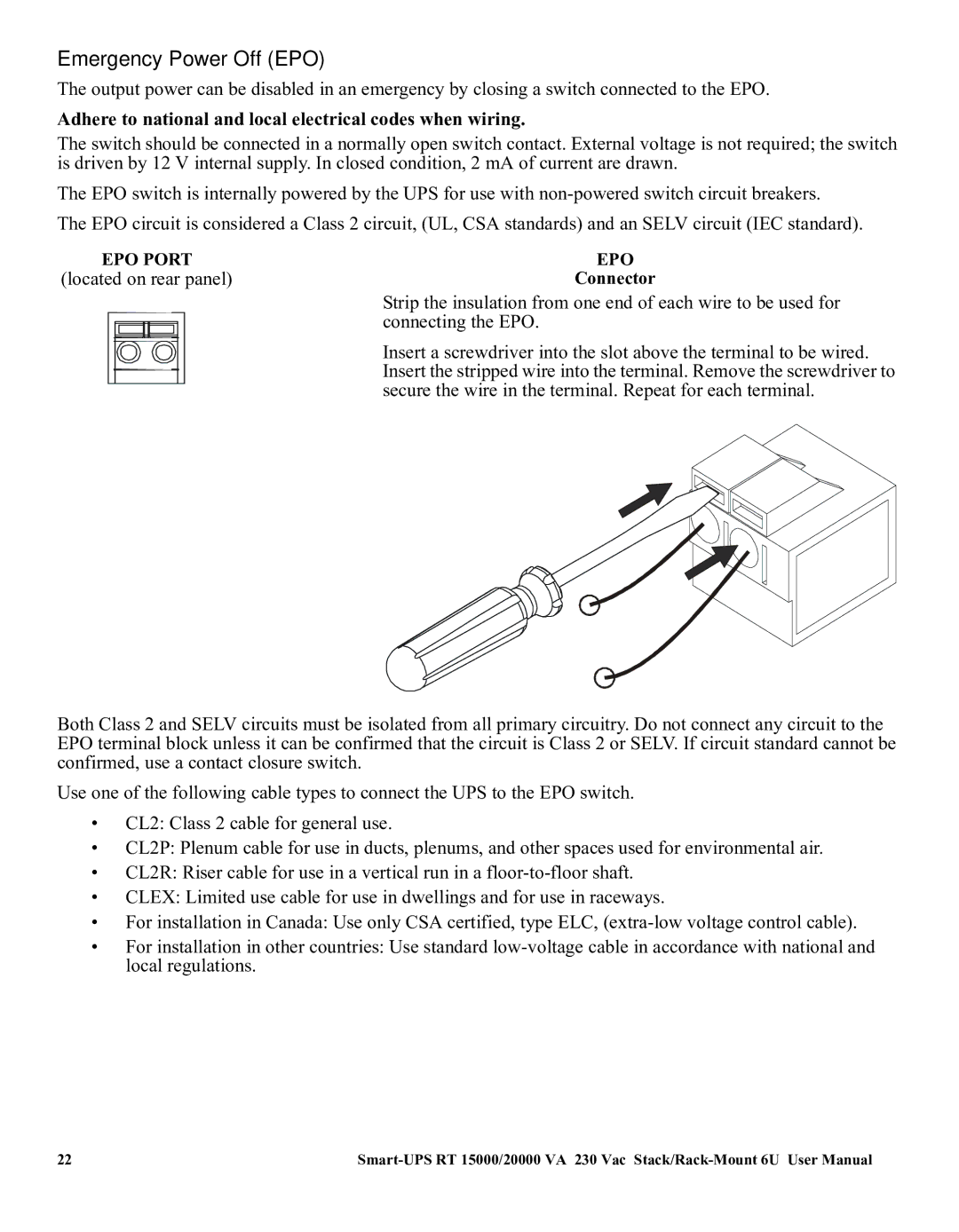
Emergency Power Off (EPO)
The output power can be disabled in an emergency by closing a switch connected to the EPO.
Adhere to national and local electrical codes when wiring.
The switch should be connected in a normally open switch contact. External voltage is not required; the switch is driven by 12 V internal supply. In closed condition, 2 mA of current are drawn.
The EPO switch is internally powered by the UPS for use with
The EPO circuit is considered a Class 2 circuit, (UL, CSA standards) and an SELV circuit (IEC standard).
EPO PORT | EPO |
(located on rear panel) | Connector |
| Strip the insulation from one end of each wire to be used for |
| connecting the EPO. |
| Insert a screwdriver into the slot above the terminal to be wired. |
| Insert the stripped wire into the terminal. Remove the screwdriver to |
| secure the wire in the terminal. Repeat for each terminal. |
Both Class 2 and SELV circuits must be isolated from all primary circuitry. Do not connect any circuit to the EPO terminal block unless it can be confirmed that the circuit is Class 2 or SELV. If circuit standard cannot be confirmed, use a contact closure switch.
Use one of the following cable types to connect the UPS to the EPO switch.
•CL2: Class 2 cable for general use.
•CL2P: Plenum cable for use in ducts, plenums, and other spaces used for environmental air.
•CL2R: Riser cable for use in a vertical run in a
•CLEX: Limited use cable for use in dwellings and for use in raceways.
•For installation in Canada: Use only CSA certified, type ELC,
•For installation in other countries: Use standard
22 |
